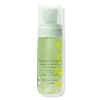What's inside
What's inside
 Key Ingredients
Key Ingredients

 Benefits
Benefits

 Concerns
Concerns

 Ingredients Side-by-side
Ingredients Side-by-side

Water
Skin Conditioning1,2-Hexanediol
Skin ConditioningGlycerin
HumectantGellan Gum
Ethylhexylglycerin
Skin ConditioningMagnesium PCA
HumectantBisabolol
MaskingPropanediol
SolventCalcium Chloride
AstringentMelia Azadirachta Leaf Extract
Skin ConditioningSolanum Lycopersicum Fruit Extract
AntioxidantHouttuynia Cordata Extract
Skin ConditioningAloe Barbadensis Leaf Extract
EmollientSalix Alba Bark Extract
AstringentMelia Azadirachta Flower Extract
Skin ConditioningMaltodextrin
AbsorbentCaprae Lac
Skin ConditioningCaprylic/Capric Triglyceride
MaskingTephrosia Purpurea Seed Extract
Skin ConditioningHydroxymethoxyphenyl Decanone
Skin ConditioningSilica
AbrasiveSorbitan Trioleate
EmulsifyingApium Graveolens Seed Extract
AntioxidantLinum Usitatissimum Seed Extract
PerfumingWater, 1,2-Hexanediol, Glycerin, Gellan Gum, Ethylhexylglycerin, Magnesium PCA, Bisabolol, Propanediol, Calcium Chloride, Melia Azadirachta Leaf Extract, Solanum Lycopersicum Fruit Extract, Houttuynia Cordata Extract, Aloe Barbadensis Leaf Extract, Salix Alba Bark Extract, Melia Azadirachta Flower Extract, Maltodextrin, Caprae Lac, Caprylic/Capric Triglyceride, Tephrosia Purpurea Seed Extract, Hydroxymethoxyphenyl Decanone, Silica, Sorbitan Trioleate, Apium Graveolens Seed Extract, Linum Usitatissimum Seed Extract
Water
Skin ConditioningEthylhexyl Palmitate
EmollientCaprylic/Capric Triglyceride
MaskingCoco-Caprylate
EmollientSimmondsia Chinensis Seed Oil
EmollientCaprae Lac
Skin ConditioningColostrum
Skin ConditioningBifida Ferment Lysate
Skin ConditioningLactose
HumectantMilk Protein
Skin ConditioningArtemisia Capillaris Extract
Hyaluronic Acid
HumectantSqualane
EmollientAloe Barbadensis Leaf Water
MaskingEryngium Alpinum Flower Extract
Skin ConditioningChamomilla Recutita Flower Extract
MaskingHoney Extract
HumectantHippophae Rhamnoides Oil
EmollientSymphytum Officinale Leaf Extract
Skin ConditioningHydrolyzed Jojoba Esters
Skin ConditioningGlycerin
HumectantSodium Chloride
MaskingHydroxyacetophenone
AntioxidantPentaerythrityl Tetra-Di-T-Butyl Hydroxyhydrocinnamate
AntioxidantHydrocinnamyl Cinnamate
PerfumingEthylhexylglycerin
Skin ConditioningPropanediol
SolventTocopherol
AntioxidantWhey Protein
Skin ConditioningC10-18 Triglycerides
EmollientLecithin
EmollientWater, Ethylhexyl Palmitate, Caprylic/Capric Triglyceride, Coco-Caprylate, Simmondsia Chinensis Seed Oil, Caprae Lac, Colostrum, Bifida Ferment Lysate, Lactose, Milk Protein, Artemisia Capillaris Extract, Hyaluronic Acid, Squalane, Aloe Barbadensis Leaf Water, Eryngium Alpinum Flower Extract, Chamomilla Recutita Flower Extract, Honey Extract, Hippophae Rhamnoides Oil, Symphytum Officinale Leaf Extract, Hydrolyzed Jojoba Esters, Glycerin, Sodium Chloride, Hydroxyacetophenone, Pentaerythrityl Tetra-Di-T-Butyl Hydroxyhydrocinnamate, Hydrocinnamyl Cinnamate, Ethylhexylglycerin, Propanediol, Tocopherol, Whey Protein, C10-18 Triglycerides, Lecithin
 Reviews
Reviews

Alternatives
Ingredients Explained
These ingredients are found in both products.
Ingredients higher up in an ingredient list are typically present in a larger amount.
We don't have a description for Caprae Lac yet.
This ingredient is an emollient, solvent, and texture enhancer. It is considered a skin-softener by helping the skin prevent moisture loss.
It helps thicken a product's formula and makes it easier to spread by dissolving clumping compounds.
Caprylic Triglyceride is made by combining glycerin with coconut oil, forming a clear liquid.
While there is an assumption Caprylic Triglyceride can clog pores due to it being derived from coconut oil, there is no research supporting this.
Learn more about Caprylic/Capric TriglycerideEthylhexylglycerin (we can't pronounce this either) is commonly used as a preservative and skin softener. It is derived from glyceryl.
You might see Ethylhexylglycerin often paired with other preservatives such as phenoxyethanol. Ethylhexylglycerin has been found to increase the effectiveness of these other preservatives.
Glycerin is already naturally found in your skin. It helps moisturize and protect your skin.
A study from 2016 found glycerin to be more effective as a humectant than AHAs and hyaluronic acid.
As a humectant, it helps the skin stay hydrated by pulling moisture to your skin. The low molecular weight of glycerin allows it to pull moisture into the deeper layers of your skin.
Hydrated skin improves your skin barrier; Your skin barrier helps protect against irritants and bacteria.
Glycerin has also been found to have antimicrobial and antiviral properties. Due to these properties, glycerin is often used in wound and burn treatments.
In cosmetics, glycerin is usually derived from plants such as soybean or palm. However, it can also be sourced from animals, such as tallow or animal fat.
This ingredient is organic, colorless, odorless, and non-toxic.
Glycerin is the name for this ingredient in American English. British English uses Glycerol/Glycerine.
Learn more about GlycerinPropanediol is an all-star ingredient. It softens, hydrates, and smooths the skin.
It’s often used to:
Propanediol is not likely to cause sensitivity and considered safe to use. It is derived from corn or petroleum with a clear color and no scent.
Learn more about PropanediolWater. It's the most common cosmetic ingredient of all. You'll usually see it at the top of ingredient lists, meaning that it makes up the largest part of the product.
So why is it so popular? Water most often acts as a solvent - this means that it helps dissolve other ingredients into the formulation.
You'll also recognize water as that liquid we all need to stay alive. If you see this, drink a glass of water. Stay hydrated!
Learn more about Water